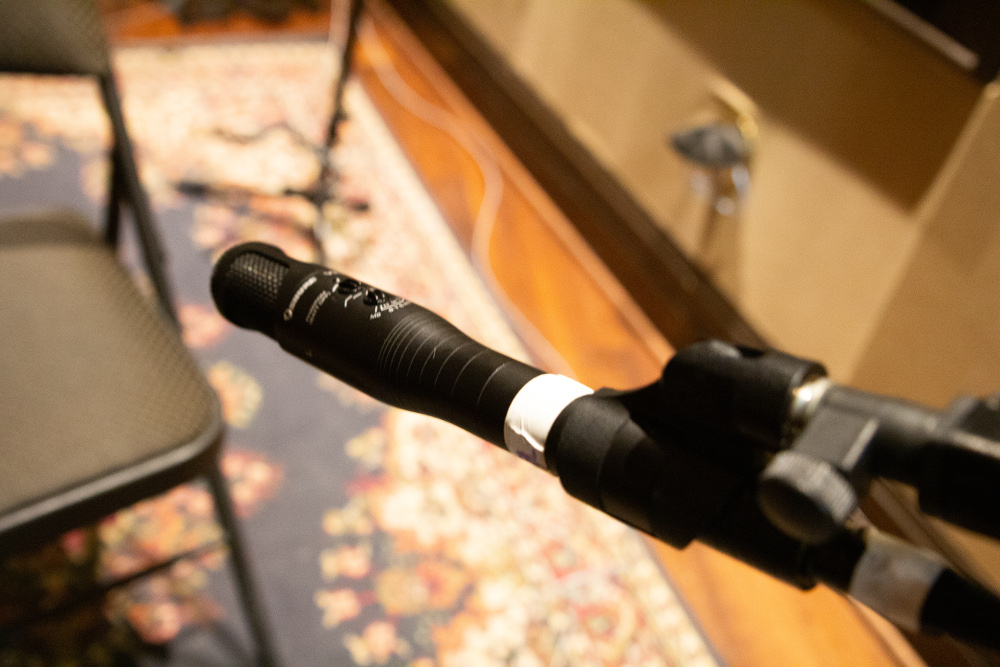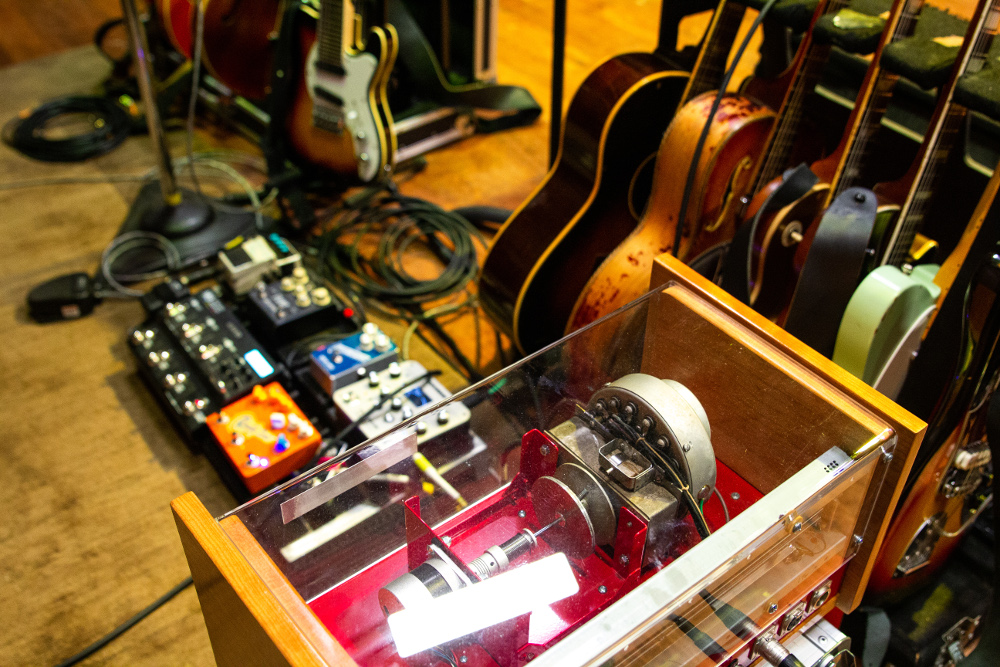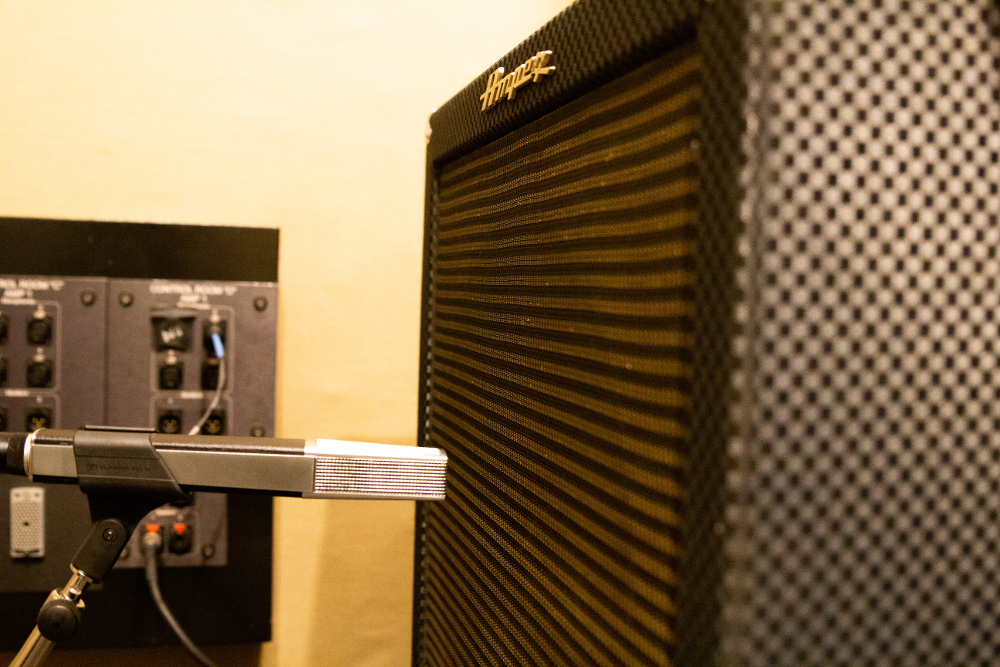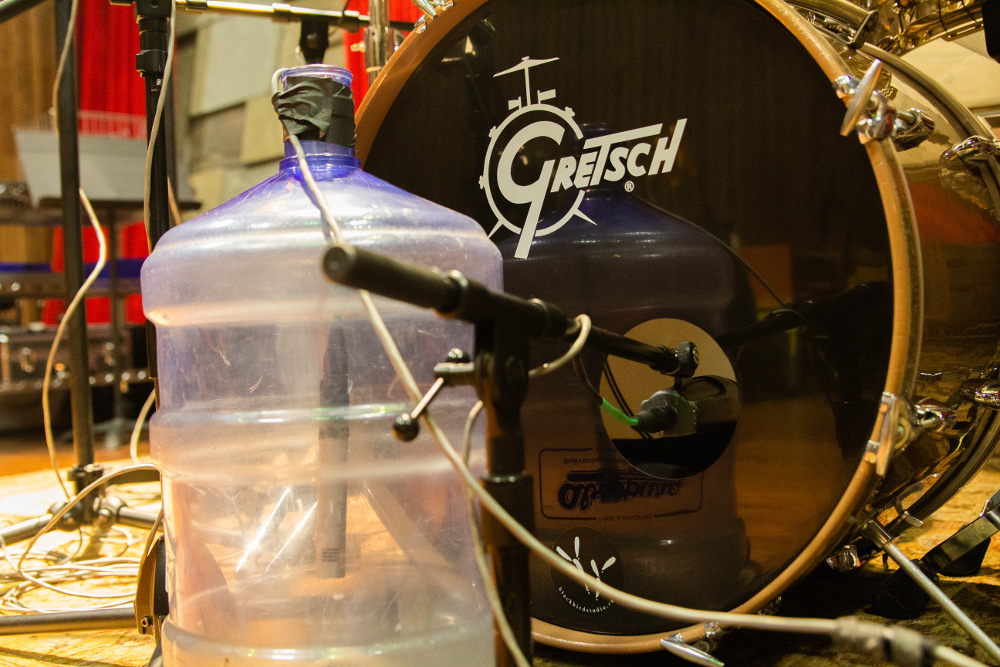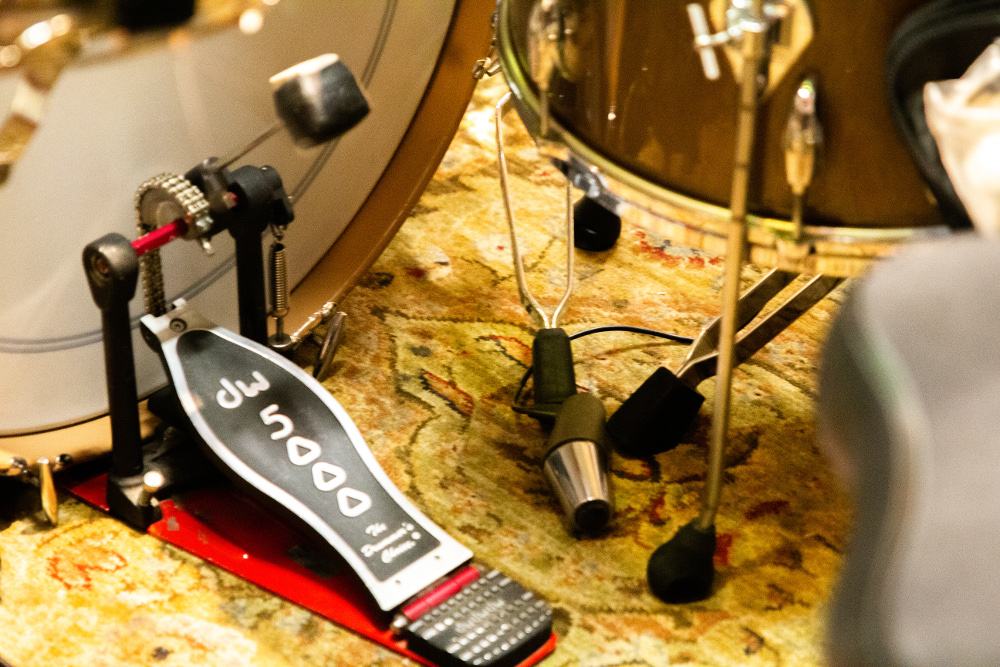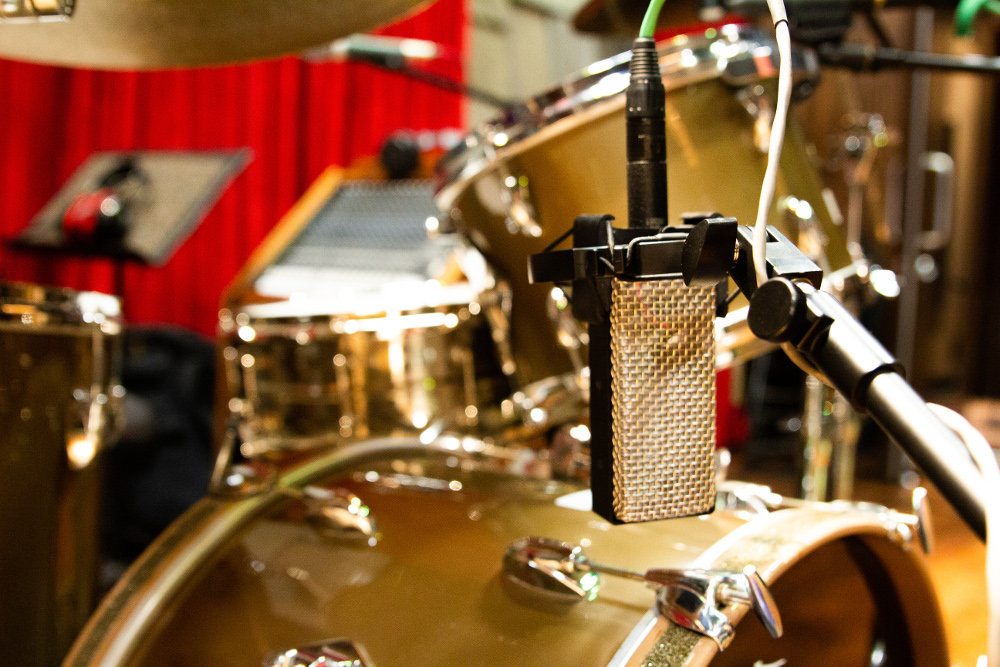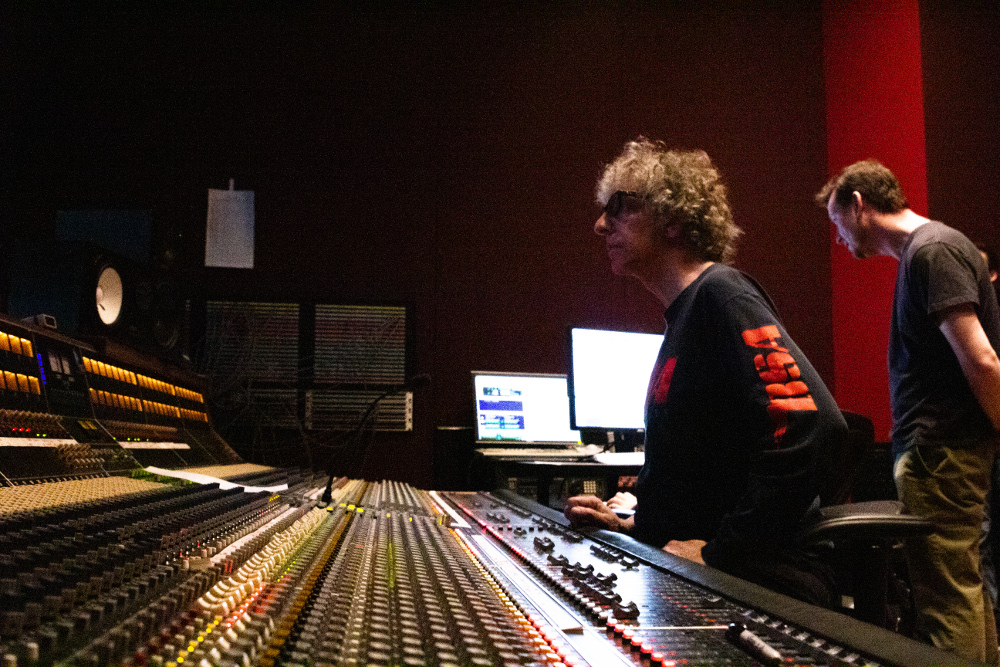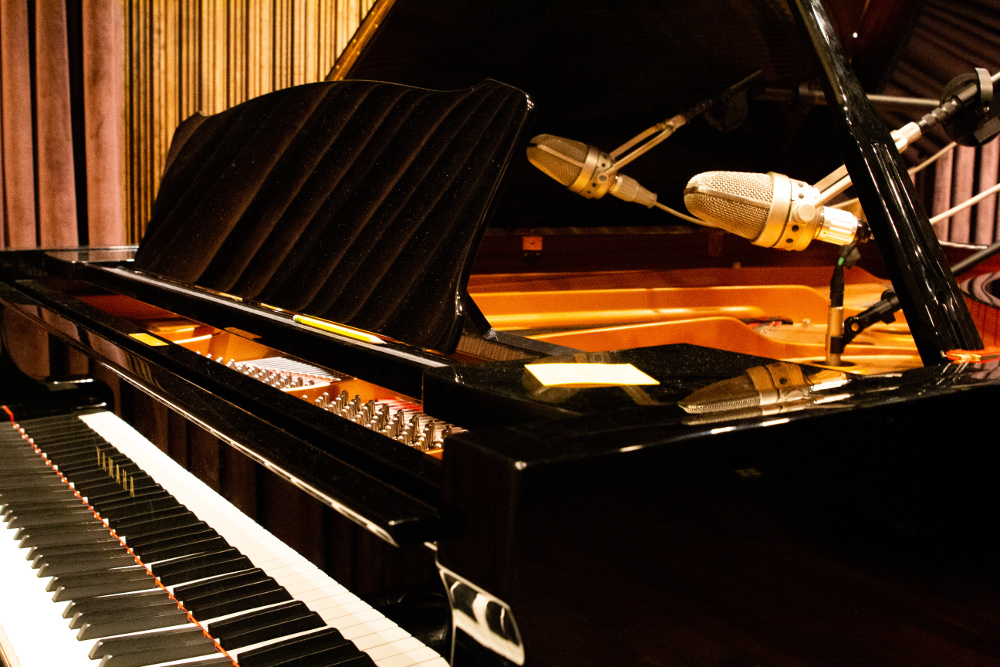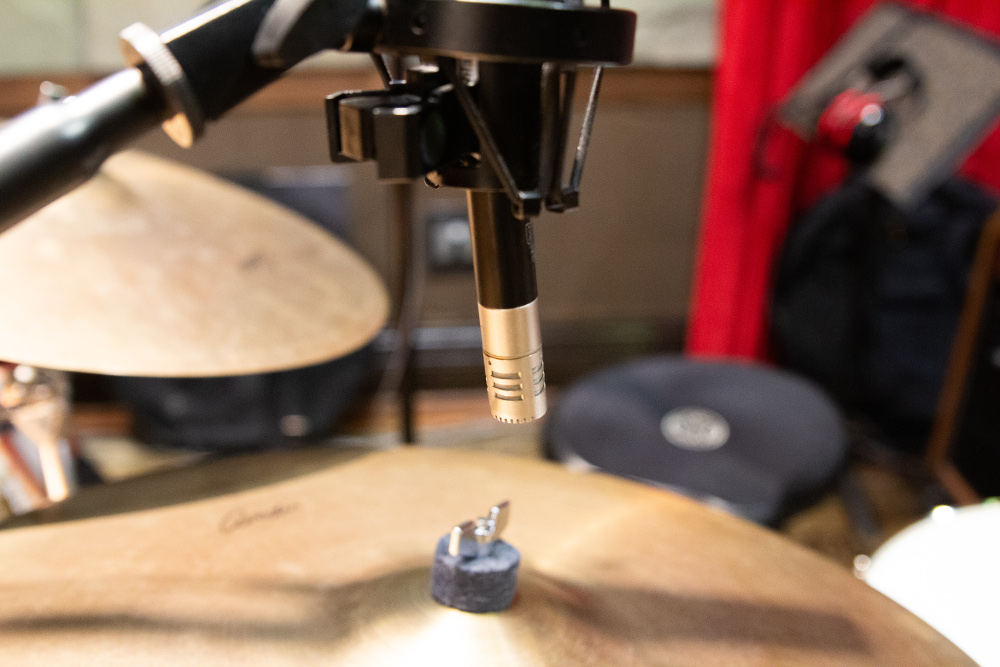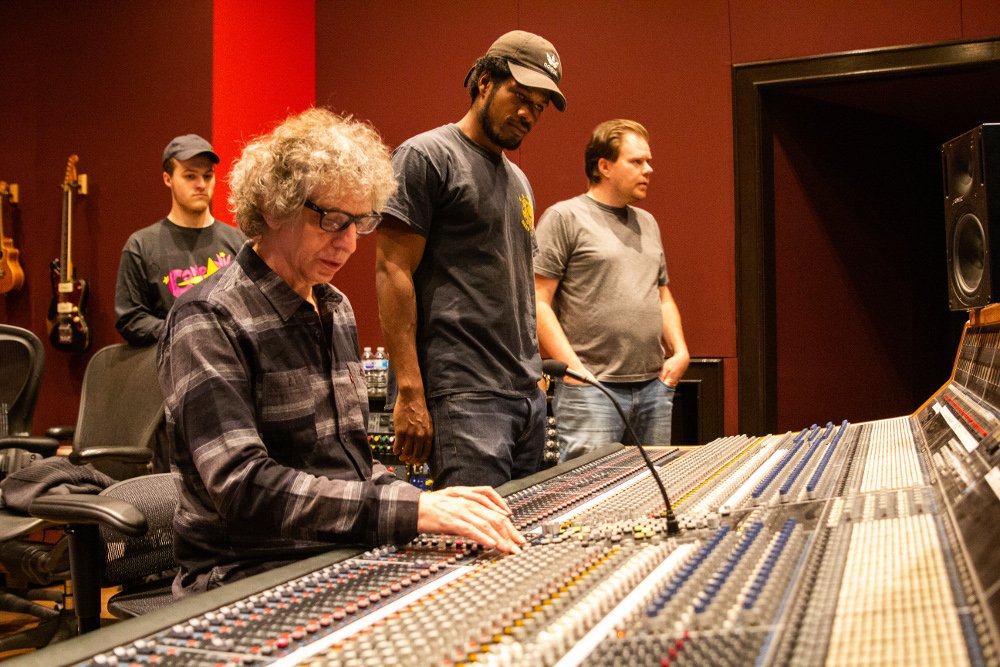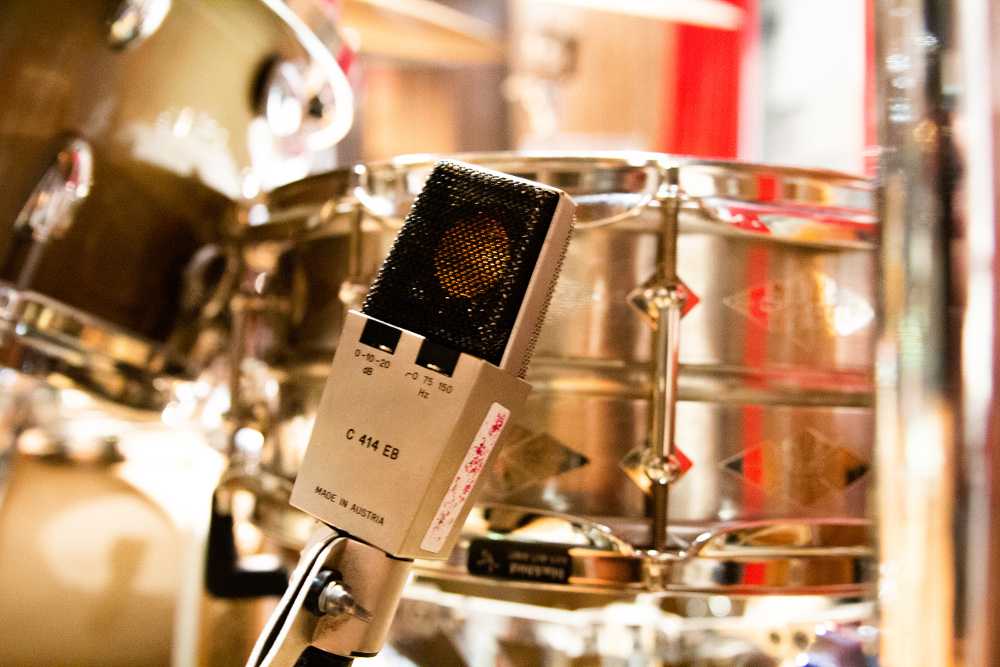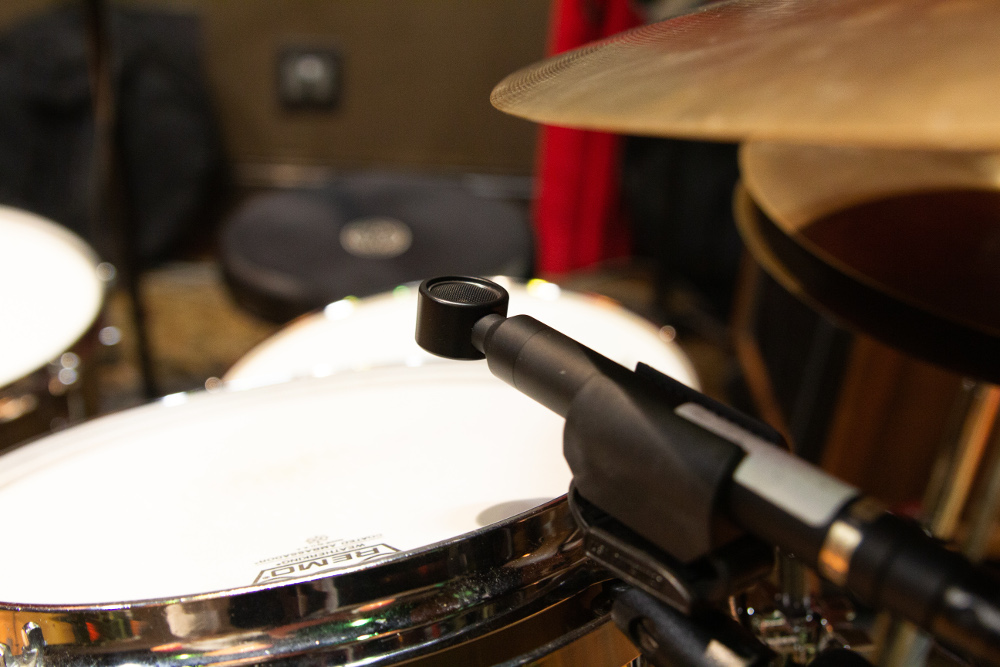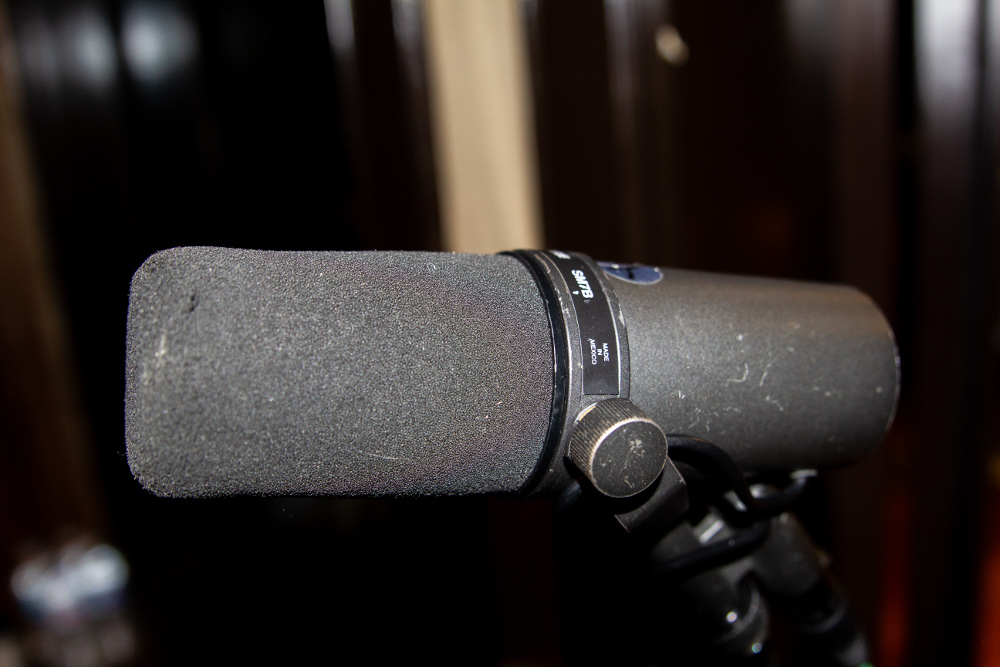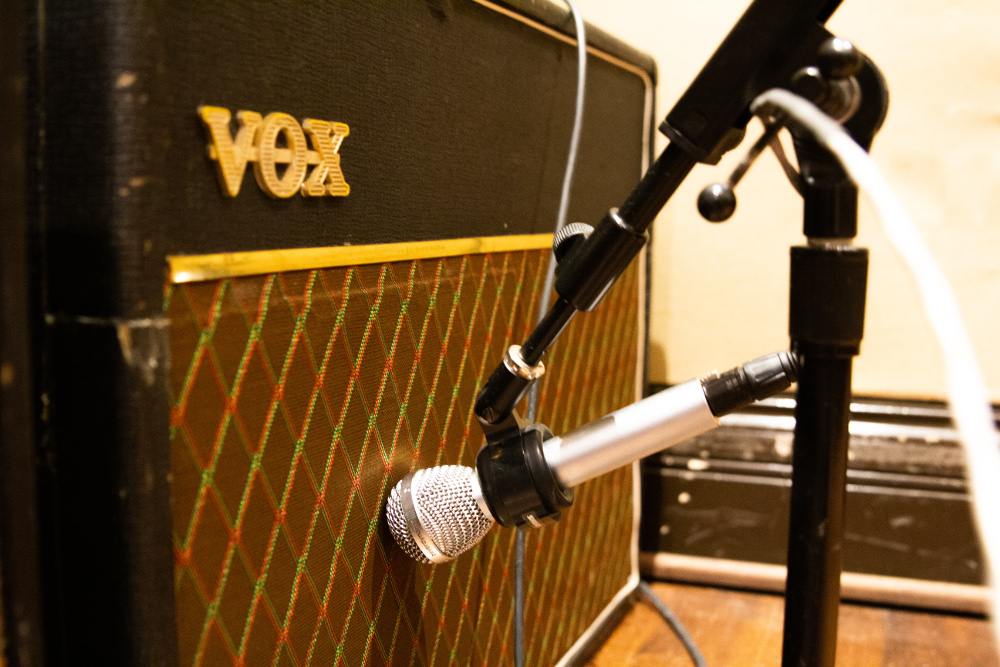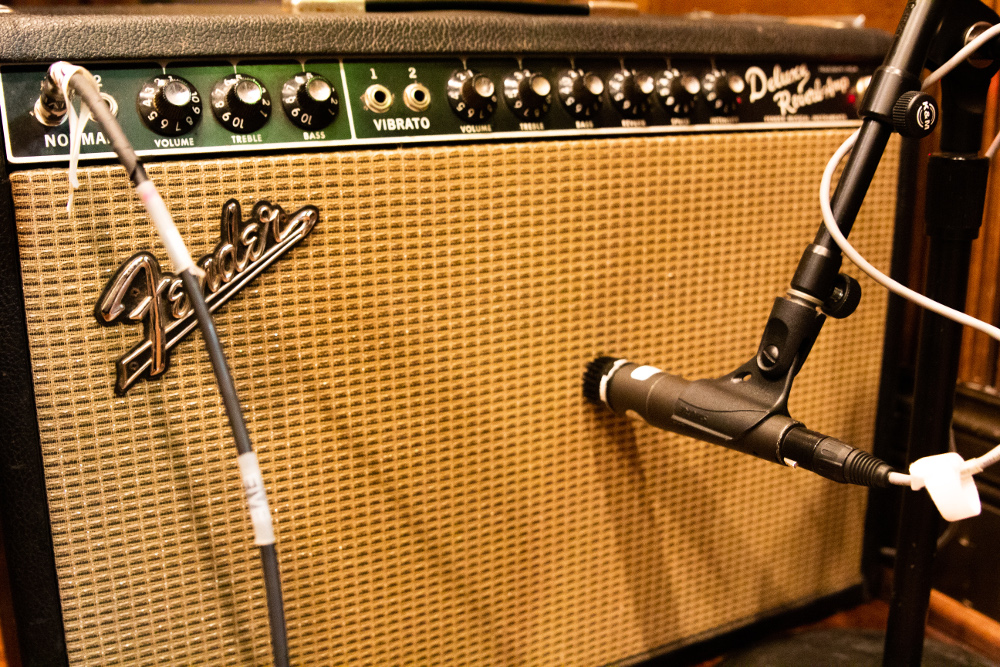Nashville Song Sessions: 15 Recording Ideas You Can Try, from Blackbird Academy
At its best, music creates an emotional experience for the listener. The best way to get there: A recording process where the audio engineers have an equal emotional investment.
You can hear that journey clearly in “Is That All?” by Rick Clark. A Nashville-based songwriter, music supervisor, and producer, Clark takes a meticulous approach to all things music. “I want every song I do to feel right to me,” he says. “Sometimes a song happens very quickly and other times it becomes a bit of a journey trying to solve a puzzle. What am I doing that is standing in the way of receiving the song’s truth?”
A beautifully soul-searching exploration of deep memories, longing and inner revelation, “Is That All” was a track Clark was especially motivated to fully capture. He chose to record “Is That All” at Nashville’s famed Blackbird Studio, collaborating with the instructors and students at the Blackbird Academy audio engineering school. (Although the recording was made pre-pandemic, the session photos have only now been made available for publication.)
“Is That All?” will be released as part of an EP this Spring through Symphonic.
“When I wrote for Mix Magazine [as its Nashville Editor], I had the good fortune to see many of the best facilities in the South, which was the region I primarily covered for the publication,” notes Clark. “Blackbird was a jaw-dropping realization of John McBride’s vision for a place that offered the absolute finest in recording environments. It is a place where I always wanted to record.
“My dear friend, Mark Rubel, who is a great engineer and producer, works at Blackbird Academy at Blackbird Studios and presented me with an opportunity to produce my music there under the umbrella of the academy. I’m a huge advocate of mentoring and it makes me very happy to bring my best work and world class players into an educational environment that is unparalleled. It is a win-win as far as I’m concerned.”
A highly accomplished engineer whose credits include Alison Krauss, Rascal Flatts, Fall Out Boy, Ludacris, and many more, Rubel saw the “Is That All” session as a special opportunity. “Rick Clark is a walking musical encyclopedia and a connoisseur of soulful music,” Rubel says. “Rick is such an inspiration to my recording students, and to me. I love to hear how he talks about music, and how in tune he is with the energy sources of music. He also has one of the greatest gifts of a producer: casting the song like a movie, with musicians who are just right for it, and then letting them do what they do.”
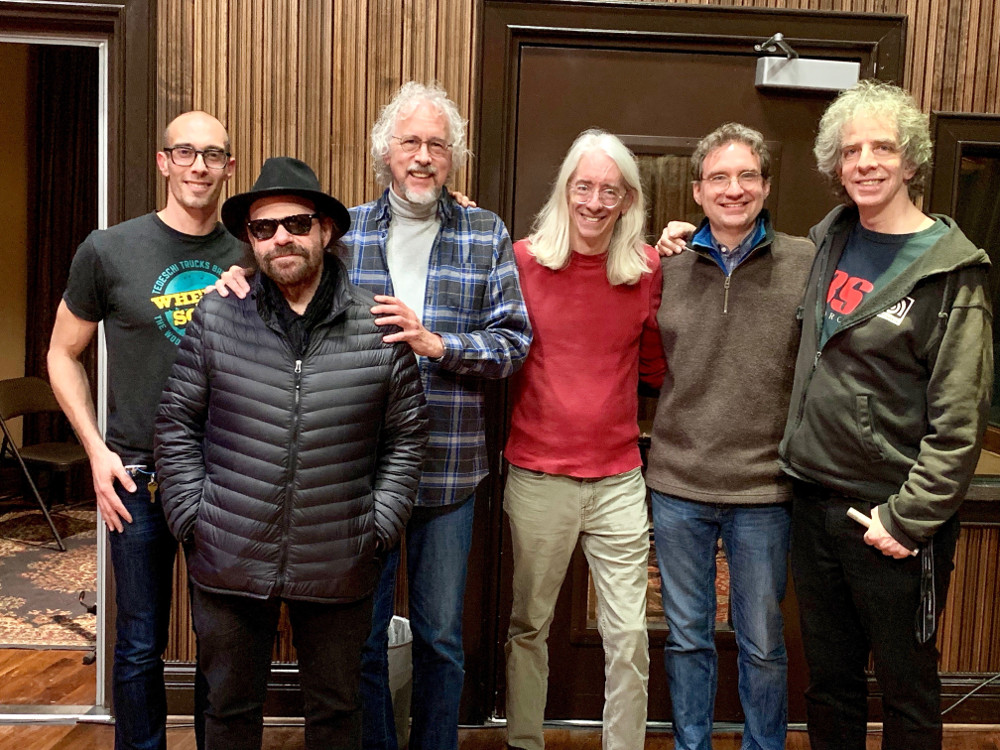
At home at Blackbird (l-r): Jano Rix (drums, percussion), Colin Linden (acoustic & electric guitars, Rick Clark (vocals, acoustic guitar), Ross Rice (keys), Viktor Krauss (bass), and Mark Rubel (engineer). (Credit for all photos: Blackbird Academy)
As you’ll see in the following photos, Rubel has a vast array of recording techniques up his sleeve, ranging from classic microphone setups to the unabashedly non-traditional.
“We are all trying to serve the song, and the emotions and experience it embodies,” he explains. “That’s bound to be an instructive learning experience for the students at Blackbird Academy, in both explicit and implicit ways. It’s musically and technically instructive for them to see certain methods of conforming the recording process to the musical, and not the other way around. For instance, we try to have the players in the same room when possible and don’t use a click track. It’s enlightening to see the communication at all levels between the players, producer, and engineer, both verbal and non-verbal. And, it’s mind-expanding to see the final arrangement, sounds, and production conjured from the ether, in real-time.”
For Rubel, everything about “Is That All” has proven to be memorable, from the song to the recording session and on to the mastered track. “It’s an interesting meditation on a relatively unusual subject,” he reflects. “It stands out to me both in the quality of writing and lyrics and the extent to which these great players are in tune with them. It is an honor to get to be in the room with music-making of such excellence.”
In the following photos, Rubel extends the privilege of being in that room with Rick Clark, his musicians, and Blackbird Academy’s students. See his perspective on the thought process behind each studio technique including how to record guitar, vocals, drums,
and more – you’re assured of recording inspiration for your next session.
(above) “I’m very fond of the Shure VP88 for recording stringed instruments. It’s a single-point middle-side stereo microphone, so it captures the fairly wide stereo spread of an acoustic guitar and gives a sense of the motion of its strumming, in a phase-coherent manner.
“As usual, the placement is a combination of combining experience in having used this mic before on a guitar, with listening to it as if I’d never heard it before, and a couple of trips in and out of the studio room to adjust the distance and angle. The sound is arrived at mostly in the context of the band playing, and not soloed. We’re not necessarily going for a full-range sound, but something that adds the right texture and frequency spectrum to complement the rest of the picture.”
(above) “The Analog Outfitters Scanner is the scanner vibrato and spring reverb from a Hammond organ remodeled into a guitar/studio effect. It’s a kind of pitch modulation, and the springs sound great in it, keeping in mind that Hammond had the patent on the spring reverberation unit. There’s an expression pedal for the variable vibrato speed. We call it ‘the sewing machine,’ and it sounds and looks great.”
(above) “We often use a vintage Ampeg B15 bass amplifier in the studio, for its tone and sometimes for its distortion. In this case, it’s supplementing a high-quality direct box as well. I love a Sennheiser 441 on electric bass, it’s very smooth and open in the upper midrange where the definition is, and the proximity effect can be nice when it’s placed as close as it is here.
“I usually start around where this one ended up: nearly touching the grille cloth, and pointing at the edge of the dust dome. Sometimes the mic needs to be backed up a bit to get a little more room and to get a more balanced tone, but Viktor’s tone is so even and beautiful that this works great.”
(above) “I do love the Sennheiser 602 as an inside microphone on bass drum, it brings out so much of what I tend to love in a bass drum sound, while minimizing boxiness. The water bottle is a kind of signature of mine I suppose: an empty 5-gallon plastic water bottle from a dispenser, with a mic hanging by its cable maybe three inches from the bottom. It’s a resonator, extends the sustain of the bass drum.
“I should say that there were maybe three or four EQ’s engaged during this recording, mainly on the tom-toms. But, I always put an EQ3 1-band on the water bottle and low pass filter it around 80 or 90 Hertz. That removes all the “boing” and basketball sound, and leaves the resonant bass and subs. It’s a great substitute for a subkick, I never loved what those do.”
(above) “That’s where a lot of the drum flavor comes from. The Ampex 1101 we call ‘The Vance Mic,’ since I first saw it used by Vance as a drum kit flavor mic. I mainly use it because of my fondness for Vance, and basically because it’s unbalanced with a ¼” output. I run it into a Rat pedal, and kind of toss it under the floor tom.
The trick is to get the filter on the pedal right so it’s not too harsh but has a properly noisy and distorted midrange. There are all kinds of Tom Waits-like fun to be had here. Sometimes I’ll put a wah pedal in line too, and use it for extra midrange sqwonk.”
(above) “That’s a Stager SR-2N, a $600 neodymium ribbon hand-built in Nashville by Matt Stager. Most excellent device and I’m using it as what we call ‘Front of Kick.’ I first saw this done by Bobby Holland, a great Nashville-based engineer/producer/musician.
“As you see in the photo, it’s over the resonant head of the bass drum, pointed at the drummer. The key is that it’s being run through a TubeTech SMC 2B multi-band compressor that acts also as an EQ, since it has a separate gain control for each of the three bands. By setting the compressor for each band separately, tweaking the crossover points, and usually pulling down the midrange band, that one mic can present a pretty great drum sound by itself, sometimes with the addition of the water bottle, the Rat pedal distortion, and sometimes something extra like an SM57 over the drummer’s right shoulder.”
(above) “This is Blackbird Studio D, in which Rush, Kings of Leon, White Stripes, Raconteurs, most of the big Nashville stars and many others have recorded. That’s the largest API Legacy console ever made, 192 channels (96 dual channels).
“I love the sound of it, I tend to prefer API consoles as I love the solid low end and the slightly forward midrange.”
(above) “This is a Yamaha C7 grand piano. Using a pair of M49’s pretty much falls under the ‘because we can’ ethos of Blackbird. They sound so lush and big and dimensional. In this case, they’re closer to the hammers, as we’ve got a lot of other instrumentation in the track so I’m going for percussion in balance with tonality. The KM84i is maybe a quarter-inch off the soundboard, and heavily compressed with an original blue stripe UREI 1176. It gives us a track whose level we can use to add definition and to center the sound with a consistent midrange attack.
“Determining the placement is the usual combination of experience, experimentation and adjustment.”
(above) “I’m getting most of the drum sound from a pair of Sanken CU41 drum overheads, which I absolutely love. I use them because George Massenburg has used them. The 451 on the ride cymbal is there mostly out of superstition: I record it so I can mute and disable the track- it’s there just in case the general overheads don’t pick up enough ping and stick sound.
“It’s the same with the high hat mics, and back when I used to record a bottom snare mic- if I don’t record them, I’m worried I’ll end up needing them.”
(above) “Getting to teach at The Blackbird Academy is nearly indescribably wonderful. We find ourselves at the center of the recording world, in a magical place with nearly all the gear there is, and getting to learn every day from fantastic people who have dedicated themselves to realizing the dreams and visions of artists.
“Being in Nashville, we’re able to bring in astonishingly talented and tuned in groups of people such as the one on this record, each of them a walking encyclopedia of music and recording. It’s a chance for the students to get to see music-making and recording at its very highest level. It’s such a great opportunity for exercising one’s listening, on every level. We get to see the song materialize from a demo, into charts, into a full-blown arrangement, and then materialize while being played in real-time with no click track and only a few overdubs.
“Musical intuition and choices, and the sort of telepathic coordination exhibited by these stellar players, result in something that we could have tried to program for a year, and never have gotten the feel and soul that they played in 4:42.
“I also ask the students to pay attention to the interaction of the players and artist/producer, and with me the engineer. What is said and how what sorts of descriptors and verbs? What isn’t said? What’s the power dynamic, how are decisions arrived at, what is everyone’s attitude? What’s the overall mood, and what is arrived at unsaid? How much is accomplished with body language, eye contact, etc.?
“It’s easy to miss the subtle but all-important details and dynamics because, as I say to the students, one of the highest arts of ninjahood is making it look easy.”
(above) “I have taken to recording the side of the snare, since most of the pickup is from the overheads. So, the diaphragmatic motion of the head gets captured from overhead, but there’s a lot of interesting information coming off the side of the drum: attack, and beefiness, that gets captured well there.
“It’s also a good way to reject high hat, and one can reduce phasing problems by not having a top and bottom snare mic. It’s often the case that we don’t use any snare mic, but are able to get what we need from the other mics. Sometimes the side snare might end up being used to derive a snare reverb, but not actually be in the mix.”
(above) “These Josephson E22 mics were designed for the purpose of micing toms, and sound great there. Again I’m supplementing what we’re hearing in the overheads and the ‘front of kick’ microphone, but the Josephsons capture a nice amount of articulation and bite, and some great low end, without making the toms sound too boxy. They save having to have top and bottom tom mics and the phasing problems that come from that. Due to their pleasant midrange resonance, Sennheiser 421’s do sound good on tom-toms, but their off-axis response can make hash of cymbals, to my ears.
“The Josephsons are great for this application, and since we have them, let’s use them! The placement is arrived at by listening in context of the rest of the kit for a good balance of attack and resonance. These mics I typically do EQ, but rarely any of the others.”
(above) “The SM7 is such a great microphone. Its smoothness and presence peak quite often make it a choice even over some of the big expensive German mics that we have here. It has good pattern control, too.
“I also used a prototype Royer D-Booster to bring up the level, which sounded excellent. Rick did end up overdubbing his vocals later, I don’t know what they used for a microphone.”
(above) “Following much experimentation, and watching carefully how others record electric guitars, I am bucking the current Royer 121 and SM57 craze. A single M88 placed close to the amp and pointed where the cone meets the dome usually yields results that sounds like the amp does in the room, to me.
“Sometimes I’ll augment with a U67 for room/ambience. Again, no EQ or compression. Colin uses a fair number of pedals and effects, and I’m trying to collect his sound as he crafts it. He is a true master.”
(above) “The good ‘ol Shure SM57 – if you can’t make records with this thing, you can’t make records. It’s a good way to capture the tone of the Wurli through the Deluxe, which is an American classic. The honk, the top end, and not too much wooly low end.”
— David Weiss
Please note: When you buy products through links on this page, we may earn an affiliate commission.







